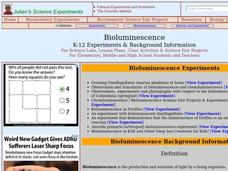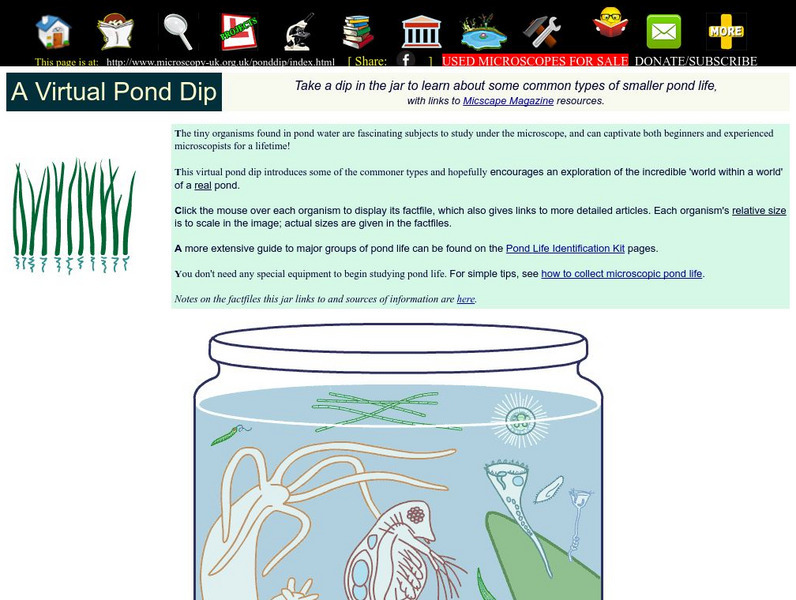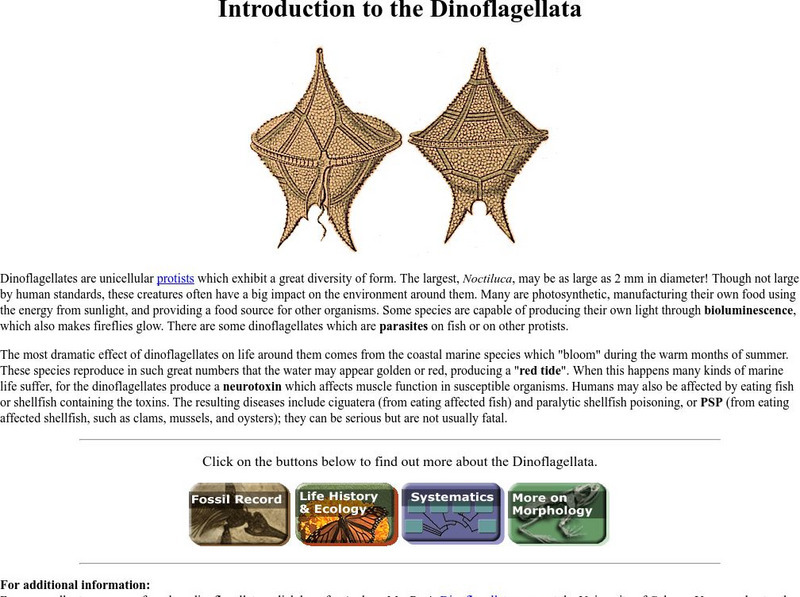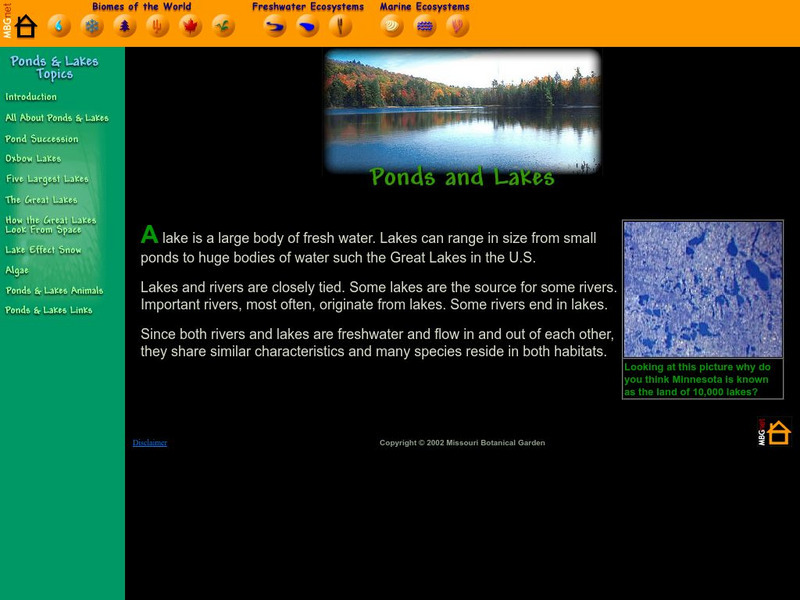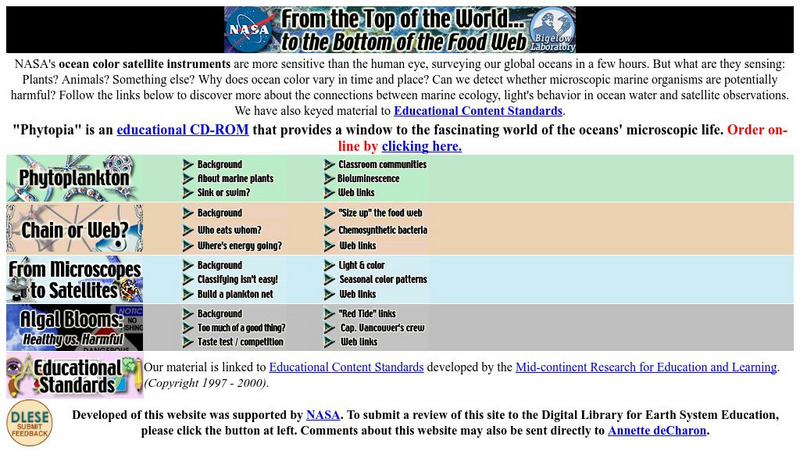Curated OER
Bioluminescence
Young scholars differentiate chemiluminescence from bioluminescence. In this biology lesson, students explain how fireflies and other animals emit light. They discuss the applications of engineered bioluminescence.
Tree of Life Project
Tree of Life Web Project: Flagellates
Very good, in-depth overview of flagellates. Includes a chart listing all the groups of flagellates.
Microscopy UK
Microscopy Uk: A Virtual Pond Dip
In this site, you will be introduced to some of the more common organisms found in a pond. Contains a thorough guide to small and microscopic pond life with links to other descriptive sources.
Virginia Tech
Virginia Polytechnic Institute: Greenhouse Dinosaur Extinction Theory
This comprehensive page discusses the Asteroid Impact vs. Volcano-Greenhouse dinosaur extinction debate. It was written by paleontologist, professor, and scientist Dr. Dewey McLean.
Biology Pages
Kimball's Biology Pages: The Protists
A brief, but informative paragraph describing the parasitic nature of sporozoans, part of a larger page about single-celled organisms.
University of California
Ucmp: Dinoflagellates
The University of California provides background material on dinoflagellates which exhibit bioluminescence. Site includes information on their fossil record, ecology, and structure.
Missouri Botanical Garden
Missouri Botanical Garden: Lakes and Ponds
This illustrated website features facts about lakes and ponds and their special place in geography, natural history, and as a biome.
Other
Bigelow Laboratory: Phytoplankton Background
Take a closer look at phytoplankton. Students can learn about diatoms, dinoflagellates, and phytoflagellates. Teachers can click on the buttons at the top and access lesson that can assist in the teaching of phytoplankton. Standards...
University of California
Uscb: The Bioluminescence Web Page
A very detailed covering of bioluminescence including myths, organisms, chemistry, physiology, and photos. Contains many links for further information.
Other
Mbari: Marine Flora
For good information about marine flora, go to this site from the Monterey Bay Aquarium Research Institute. It provides details about different types of seaweeds and phytoplankton. It also contains a photo gallery.
Middle School Science
Protist Lab
In this concise lab exercise, you will examine protists under the microscope, see examples of different protist types, and compare modes of locomotion.


